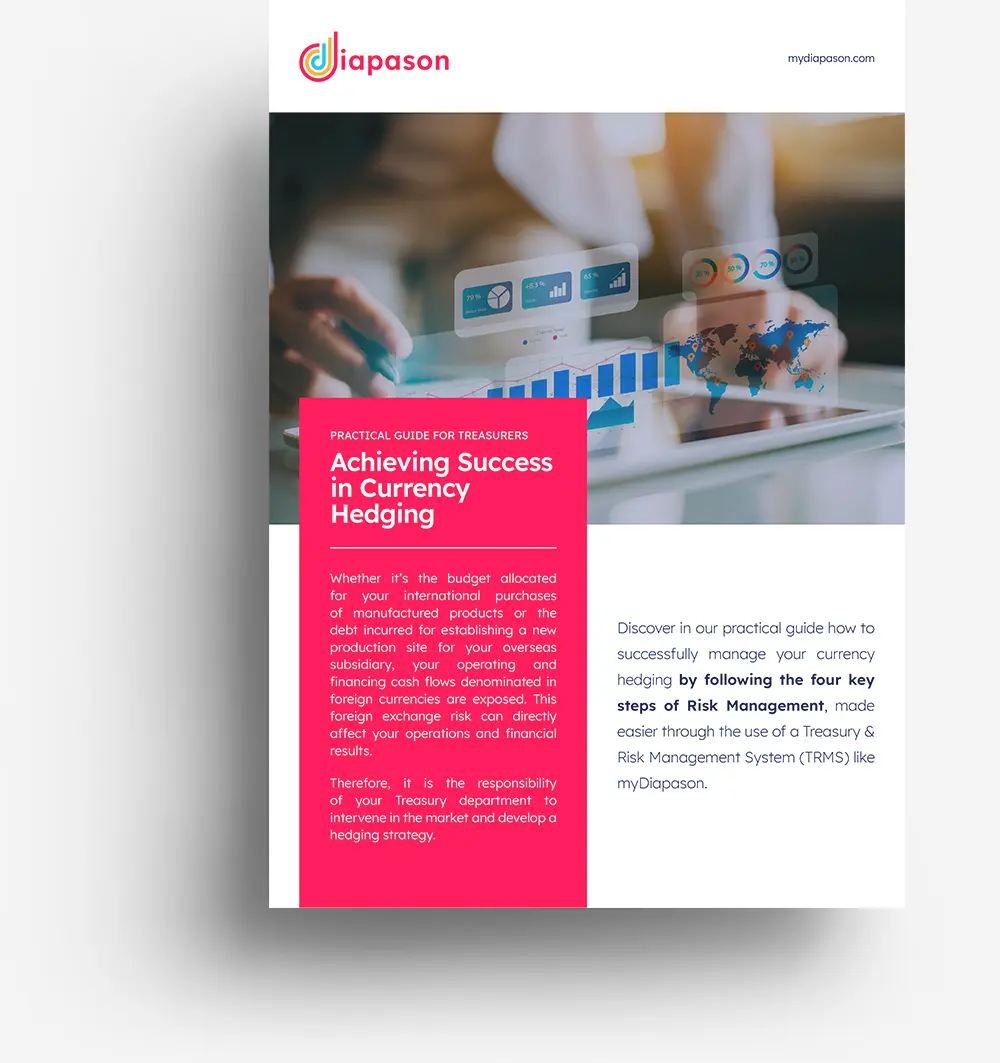The management of cash flow forecasts is a key element in the success of a business.
While this statement may seem obvious, mastering forecasts allows for future projections, efficient financial planning, strategic decision-making, resource management, problem prevention, and communication with stakeholders.
A clear visibility into cash flows promotes financial stability and the longevity of a business.
To create the most reliable cash flow forecasts, the treasurer must anticipate financial flows at various horizons: short term, medium term, and long term. In the latter case, it is referred to as a cash budget.
Short-Term Cash Flow Forecasting
Short-term cash flow forecasting is essential for the day-to-day management of bank balances and anticipating cash surpluses or needs. It is a crucial aspect for the financial health of a company.
Short-term cash flow forecasting involves tracking and regulating available cash flows in the near future, ranging from a few days to a few weeks. The objective is to ensure that the company has the necessary resources to meet its current expenses, such as salaries, supplier invoices, various withdrawals, and other short-term obligations.
Decisions made in the realm of short-term cash management directly impact the financial liquidity of the company, its ability to meet commitments, and to seize investment and/or placement opportunities.
Common tools for this management include cash flow forecasting, managing cash inflows and outflows, as well as implementing overdraft authorization or credit lines to cope with uncertainties.
In essence, effective short-term cash management is indispensable to preserve the company’s ability to meet commitments with partners and ensure its optimal daily operation.
Medium and long-term cash flow forecasting will support the company in strategic decision-making, such as planning investments, external growth opportunities, optimizing resource allocation, and anticipating risks.
Medium or long-term cash flow forecasting generally consists of five key steps:
1. Data Collection
Data collection can be approached in two ways: either through the cash flow-based approach or the accounting document-based approach.
- The cash flow-based approach involves directly collecting data from projections or consultations with each subsidiary.
- The accounting-based approach is built from an opening balance sheet and the cash items from an income statement to create a cash budget, applying rules for reconciliation, receipts, and disbursements.
2. Flow Consolidation
If data collection is done at the subsidiary level, this step is crucial to obtain a consolidated budget, and sometimes conversions are necessary, especially in the case of managing multiple currencies.
Consolidation takes into account currencies, ownership percentages, and intra-group flows, the management of which at the group level can quickly become a complex task.
3. Analysis of Consolidated Forecasts
Analyzing consolidated forecasts enables strategic decision-making regarding investments and financing.
Regardless of the chosen approach, a consolidated view with an analysis by entity is valuable to assist in spreading a cash culture by involving stakeholders from subsidiaries as much as possible.
4. Periodic Review of Forecasts
Periodic review of forecasts allows for adjustments based on occurring developments. The review ensures that all contributors maintain a cash perspective on the company’s activities.
5. Comparison of Cash Flow Forecasts with Actual Results
Comparing actual results with forecasts is a crucial exercise to ensure the reliability rate of cash flow forecasts. When this rate is close to 95/98%, the treasurer gains credibility with their management and financial partners.
The Digitalization of Cash Flow Budgeting with the myDiapason Solution
When the treasurer performs these various steps in a tool like Excel, it can lead to several issues, particularly in terms of reliability and completeness. The diversity of data sources requires a lot of time and effort to keep files up to date and can result in numerous errors.
That’s why Diapason offers an integrated solution that allows you to easily and efficiently perform all these steps, ensuring the quality and consistency of data.
Let’s see how the myDiapason solution helps you digitize each of these stages.
1. Data Collection
No more files circulating by email or each contributor customizing their template. Users are invited to enter their forecasts directly into myDiapason based on a common matrix.
Moreover, with the myDiapason solution, the frequency of forecasts can be adapted as needed. For example, you can perform weekly forecasts over a quarter, corresponding to a 13-week rolling forecast. You can also change the forecast frequency based on the situation, moving from daily forecasts for the first 15 days to weekly or monthly forecasts later.
The accounting-based approach will allow you to digitize all rules and reconciliation laws from the management control budget. As a reminder, this method involves transforming an operational budget into a cash budget by applying allocation rules. These allocation rules can be configured directly through the myDiapason interface. For instance, you can choose to allocate customer receipts over two days, with an 80% allocation on the sixth day and 20% on the seventh day of the month.
2. Cash Flow Forecast Consolidation
In myDiapason, forecast consolidation is instantaneous.
This is a crucial step for international companies that collect data at different levels. myDiapason streamlines this task by allowing subsidiaries to submit their forecasts within the specified deadlines.
After obtaining a consolidated budget, you can complement it with information available in the myDiapason Cash module. You can view the opening balance and all forecasts on the same report from a given date. By cross-referencing this information with cash flow forecasts, the treasurer can make relevant decisions on investments and financing to achieve financial goals.
3. Analysis of Cash Flow Forecasts
With its various standard reports and the ability for our clients to customize them, myDiapason allows for analyzing forecasts from all perspectives and according to the organizational chart and analysis axes desired by treasurers.
4. Comparison between Actual Results and Cash Flow Forecasts
The myDiapason solution facilitates the comparison between forecasts and actual results. This comparison helps understand and justify discrepancies that may arise between the budget and actual results. Moreover, the treasurer has the option to incorporate these differences into future milestones, enhancing financial planning.
5. Budget Simulation
The budget simulation module of myDiapason allows testing different scenarios on expense and revenue items. It gives treasurers the ability to modify amounts or dates for each budget item, choosing the number of periods to consider. This feature facilitates budget management and anticipation of financial needs.
The Benefits of the myDiapason Solution for Managing Cash Flow Forecasts
myDiapason is an innovative solution for managing your company’s cash flow forecasts. It offers treasurers several advantages, including:
- Reliability in consolidation and design processes, thanks to a unified platform that replaces various Excel files and reduces sources of errors.
- Automation of manual tasks, such as consolidation, rule creation, and variance analysis. Treasurers save time and enhance quality by avoiding tedious and repetitive manipulations. This automation allows focusing on result analysis and improving forecast accuracy.
- Predictability of future liquidity, achieved through regular comparison with actual results. The treasurer has a clear and up-to-date view of the financial situation and the ability to meet cash needs. This approach strengthens the treasurer’s confidence with management, shareholders, and bankers.
To go even further:
Artificial Intelligence to enhance the accuracy and efficiency of budget forecasts.
In the product development roadmap, Diapason plans to integrate artificial intelligence algorithms in 2024 to analyze past data and anticipate future needs. This AI will enable treasurers to adjust their forecasts based on market fluctuations and make optimal decisions regarding financing, investment, and risk management.
About the Author
Célia Tinoco, Marketing and Communication Officer
Célia has joined the Marketing team as a Marketing & Communication Officer. In the content area, she writes in-depth and timely articles on topics related to the treasurer’s profession. Her goal is to provide treasurers with insights to better master their treasury management and support them in their daily tasks.








